We earn a commission from partner links on this site. This doesn’t affect our opinions or evaluations.
The remarkable surge in digital education has created tremendous possibilities for education entrepreneurs to sell online courses.
Yet, a concerning pattern has emerged where the majority of learners never complete their online courses. eLearning statistics indicate that online course completion rates typically hover around 15% and may reach up to 40% in certain instances.
But does a low completion rate for your course warrant concern?
Definitely! You’ll not only face an increased likelihood of negative reviews and refund demands, but you’ll also miss opportunities for repeat business and referral marketing. Most crucially, your students won’t achieve their intended learning goals.
That’s why we’ve developed this comprehensive guide featuring seven effective tactics to enhance course completion rates. We’ve also included an extra valuable tip at the conclusion.
Let’s begin.
Before exploring strategies to enhance completion rates, let’s examine the key factors that typically lead to student abandonment:
These represent the most prevalent reasons behind student dropouts. However, identifying the specific barriers affecting your particular audience is essential, a topic we’ll address further along in this guide.
Now, let’s turn our attention to strategies that address these challenges and will help improve your online course completion percentages.
This represents the most powerful and straightforward engagement approach available.
Nevertheless, we frequently observe course creators either completely overlooking this strategy or failing to utilize it effectively.
You can address several common dropout factors, such as students becoming distracted by other priorities or experiencing diminished motivation, by implementing a well-structured follow-up protocol.
Here are several proven engagement emails you can deploy to connect with your students:
Immediately after a learner enrolls in your online course, dispatch an initial onboarding communication. This message should include access credentials, establish clear guidelines, outline the curriculum timeline, explain community participation options, and provide support contact information.
Our colleagues at TextileArtist.org distribute an exceptional onboarding communication to participants when they register for their digital learning experiences, and we highly recommend their approach as an exemplary model.
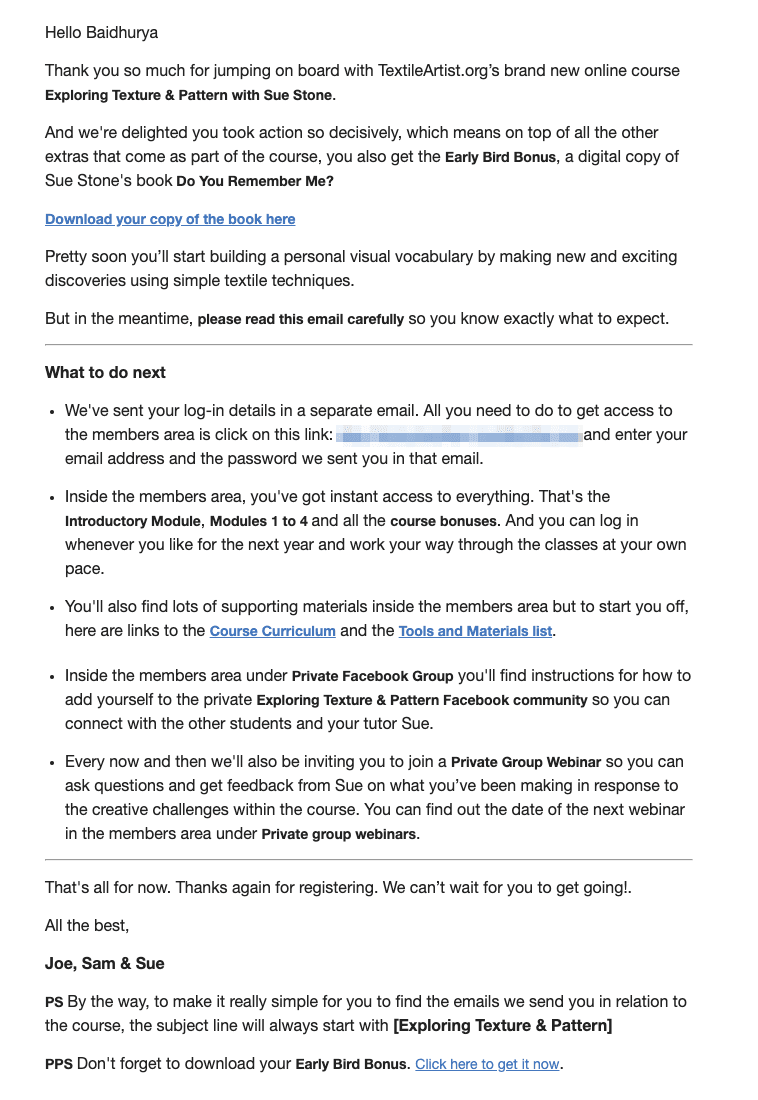
Welcome email sent to new Textile Artist students
Their initial communication serves multiple purposes simultaneously – delivering the advertised incentive materials, establishing clear program expectations, and providing comprehensive instructions for navigating both the members’ portal and the exclusive Facebook community.
In today’s bustling and distraction-filled environment, learners easily lose track of their digital educational commitments. Implementing scheduled progress communications effectively recaptures your participants’ attention and guides them back to your learning materials.
Depending on your curriculum structure, you might choose to distribute progress updates either on a weekly basis or specifically when fresh content becomes available.
When crafting these engagement messages, begin by reconnecting students with their initial motivation for enrollment, then provide insights about their current advancement, upcoming module highlights, and other relevant details.
Miles Neale, instructor of the Contemplative Studies Program, dispatches alert communications to participants whenever new learning materials become accessible or assignment deadlines approach. This strategic communication approach has substantially enhanced his student participation metrics.
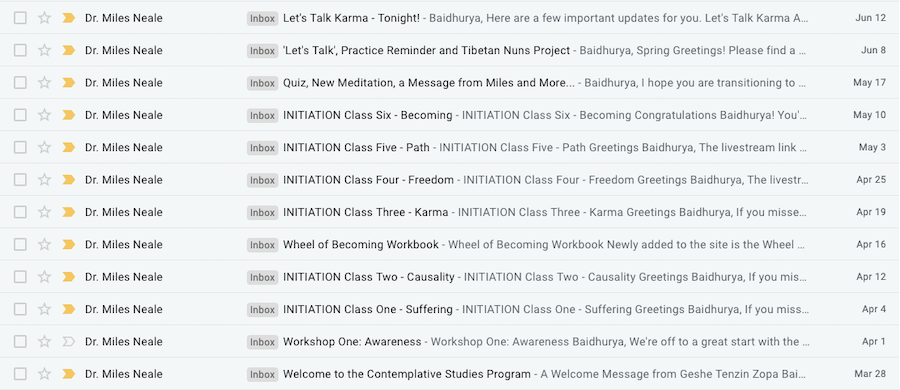
Miles Neale sends regular reminder emails to his students
Electronic communications serve functions beyond mere notifications and reminders; they provide excellent opportunities to inspire your participants.
Consider sending achievement acknowledgment messages when students complete curriculum sections or successfully master assessment activities, significantly boosting their momentum toward continued progress.
These examples represent just a few approaches to leveraging digital communications for student engagement. Numerous additional strategies exist, including educators sharing participant success narratives or gathering valuable input through response requests.
Digital learning communities offer participants venues for connecting with fellow learners, receiving constructive feedback and assistance, posing questions, and celebrating achievements.
Individuals engaged in interactive social networks naturally devote greater time to these platforms. These environments allow members to discuss challenges and benefit from others’ expertise and insights, preventing learning roadblocks.
Furthermore, publicly declaring commitments within social environments enhances accountability for learners, boosting goal achievement rates by approximately 33%.
Among the most impactful educational programs I’ve personally experienced is Digital Course Academy by Amy Porterfield. While the curriculum materials were exceptional, the private Facebook Group proved to be the program’s greatest asset.
Numerous situations have arisen where I required technical assistance or faced motivational challenges, and the Facebook community consistently provided valuable solutions.
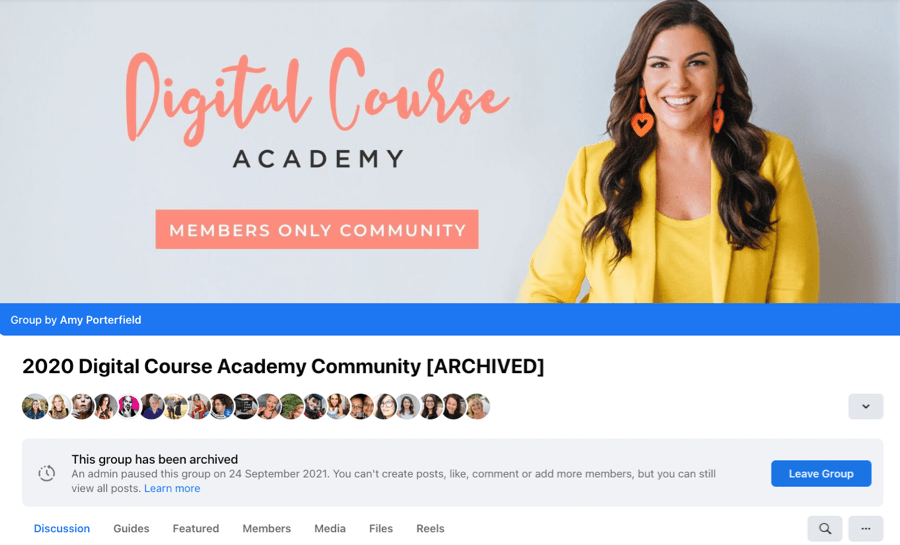
Digital Course Academy FB Group
Consequently, compelling evidence supports integrating interactive community features within your educational offering. Although we recommend utilizing a dedicated community management solution, established social networking platforms like Facebook or Slack can also effectively serve this purpose.
Receiving additional benefits for dedicated educational efforts consistently creates positive psychological impacts, making supplementary rewards upon completion powerful motivators for program persistence.
Among the most effective reward mechanisms are professional credentials. These certifications enhance learners’ professional portfolios while simultaneously functioning as compelling motivational drivers toward program completion.
This approach proves particularly effective when your curriculum develops workplace-relevant capabilities. Digital Marketer’s educational offerings represent exemplary implementation of this strategy.
Their comprehensive advanced training modules each include official credentials, attracting numerous participants specifically for these valuable professional validations.
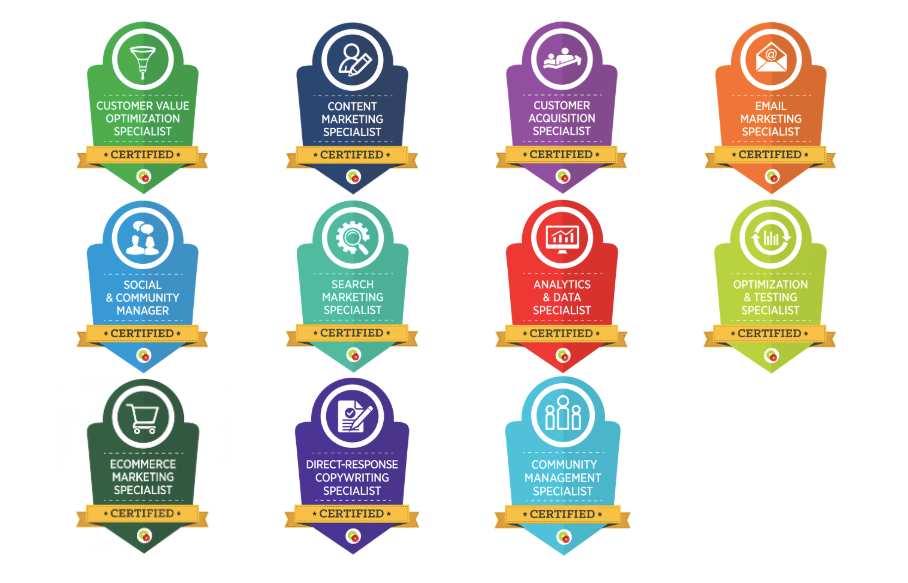
Certification badges for Digital Marketer’s courses
Numerous alternative reward structures exist for your educational program. Options include offering preferential pricing on subsequent offerings or granting admission to your exclusive mentorship community for participants who finish your entire curriculum.
This area welcomes creative approaches. A particularly noteworthy incentive strategy is the 100% Pass Guarantee implemented by David Young for his FAA Part 107 training program.
Under this guarantee, participants who do not successfully complete the FAA Part 107 examination qualify for complete reimbursement. However, this assurance includes a critical prerequisite mandating full completion of all learning modules and successful performance on all assessment activities.
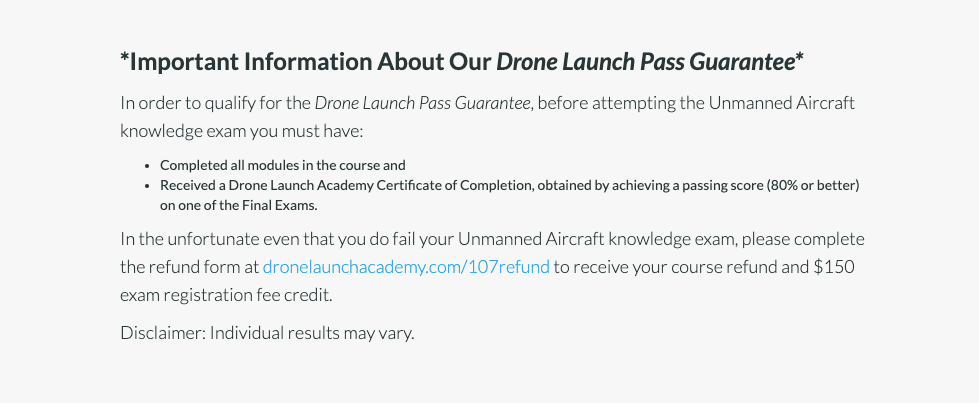
Drone Launch Academy’s pass guarantee
Establishing significant transformational objectives for your digital learning experiences provides essential direction, yet structuring incremental achievement opportunities throughout the learning journey proves equally crucial.
These progressive accomplishments generate ongoing satisfaction as participants experience tangible advancement, effectively preventing discouragement and substantially reducing abandonment rates.
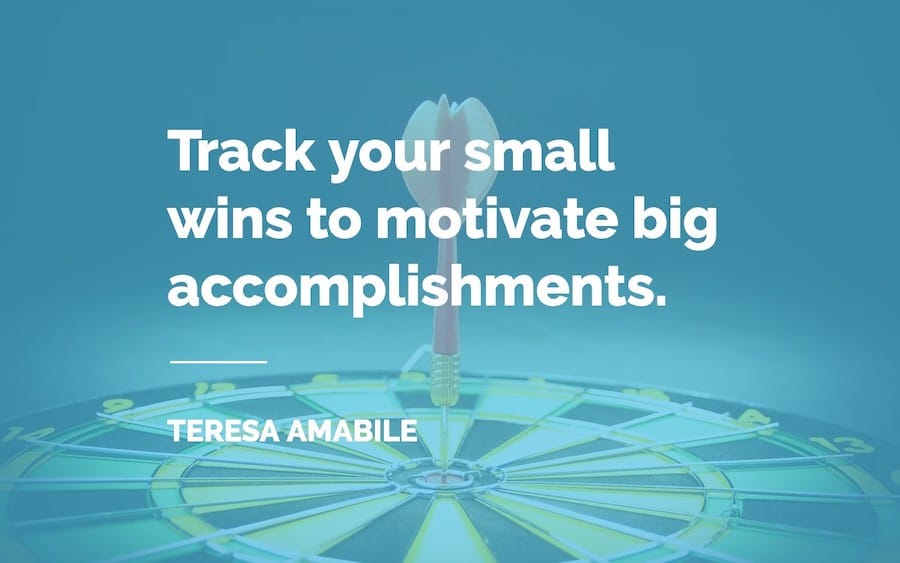
Quote about tracking small wins
Implementing gamification elements represents an exceptionally effective method for integrating incremental achievements into your curriculum. For instance, Duolingo, the renowned language acquisition platform, extensively employs gamification strategies to maintain learner engagement.
As participants progress through instructional content and complete learning activities, they accumulate achievement points, receive recognition badges, progress through competency levels, and gather digital currency redeemable within their marketplace ecosystem.
These interactive elements significantly enhance student motivation throughout their educational journey.
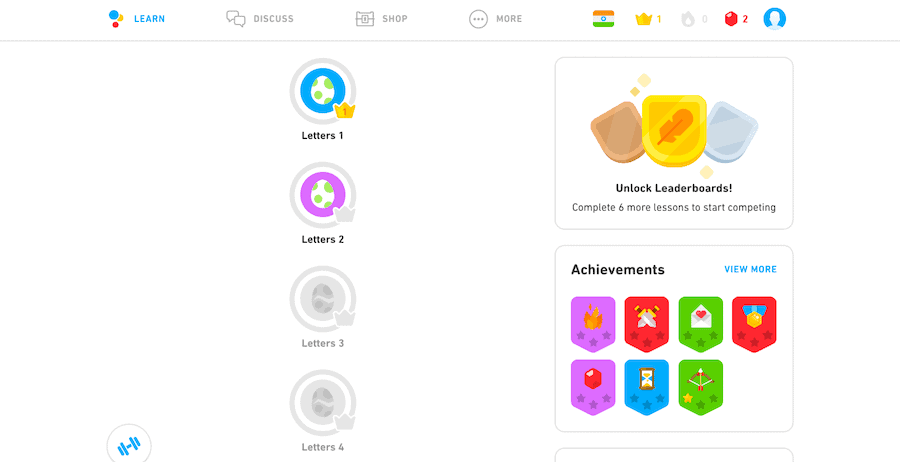
Duolingo’s gamification strategy
Nevertheless, many educators lack sufficient resources or technical capabilities to implement comprehensive achievement tracking mechanisms within their programs, which remains perfectly acceptable.
In such situations, consider adopting straightforward approaches like distributing accomplishment acknowledgment messages to participants following each curriculum section completion, highlighting their newly acquired knowledge and suggesting practical applications in their professional or personal contexts.
Additionally, you might encourage learners to publicize these achievements with fellow community participants.
The implementation method matters less than recognizing the fundamental importance of progressive achievements and systematically incorporating them throughout your educational program.
Mobile-friendly educational experiences have transitioned from optional enhancements to essential requirements for contemporary digital learning programs.
Consider these revealing metrics:
Therefore, when evaluating digital learning delivery solutions, prioritize cross-device compatibility and responsive design capabilities across all computing environments, particularly mobile platforms.
At minimum, ensure your curriculum functions properly within mobile browsers. Ideally, implement dedicated mobile application access, as this substantially enhances the learning experience through valuable functionalities like content availability without internet connectivity.
Ultimately, your instructional materials should be deliberately structured with mobile users’ unique requirements and preferences as primary considerations.
Exceptional instructional design represents the foundational element for participant engagement and substantially influences digital learning program completion percentages.
Beyond content quality considerations, the following strategies can dramatically enhance your curriculum’s appeal and captivation:
Enhancing your educational materials with rich visual components significantly facilitates concept comprehension compared to text-exclusive presentations.
Moreover, visual learning strategies extend beyond improved understanding to enhance information retention and strengthen participant motivation.
Numerous approaches exist for integrating visual components within your curriculum structure, with video content representing the premier (and most widely utilized) format for visual information delivery.
Additional visual formats worth considering include digital learning resource documents, data
When your educational program consists solely of passive content such as recorded presentations without interactive elements, participant interest frequently diminishes rapidly, highlighting the necessity for incorporating dynamic engagement opportunities.
Implementing periodic knowledge assessments and practical application exercises throughout your curriculum represents the most straightforward approach to enhancing interactivity. This methodology provides learners with valuable progress feedback while simultaneously promoting active participation in the learning process.
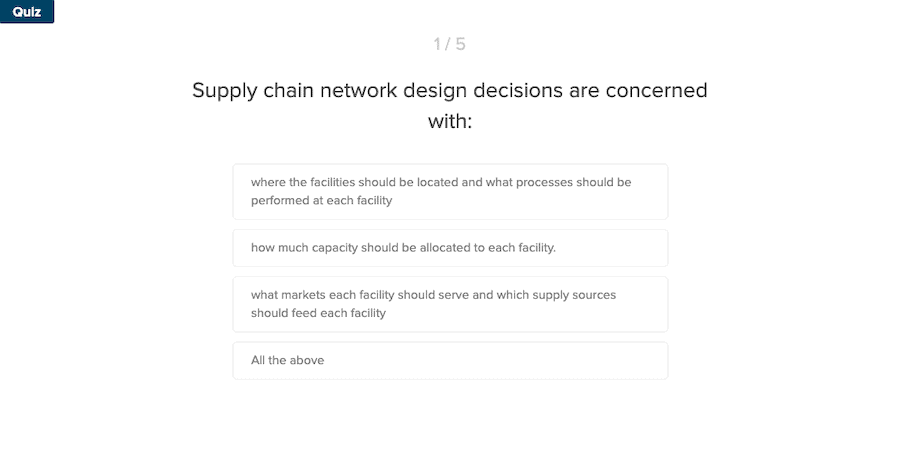
Quiz at the end of a module in Baidhurya’s network design course
Research indicates that an average learner can maintain focus during educational content for approximately 10-15 minutes.
Therefore, when your educational segments or units extend beyond this timeframe, students may struggle to effectively absorb information in one continuous session.
Additionally, our exploration of mobile learning in the previous segment highlights why compact, focused learning components have become increasingly essential.
Many learners enroll in digital education programs despite lacking genuine interest in the subject matter, resulting in minimal engagement with the material.
An effective strategy to filter out these casual participants from your educational offering is by positioning your course at a strategic premium price point.
This approach is validated by my direct experience. For instance, my logistics management course hosted on Udemy achieved only a 6.4% completion rate, with 60% of enrolled students never viewing a single lesson segment.
Conversely, after transitioning the identical course to my proprietary platform, completion metrics surged beyond 25%, with virtually no students failing to begin the curriculum.
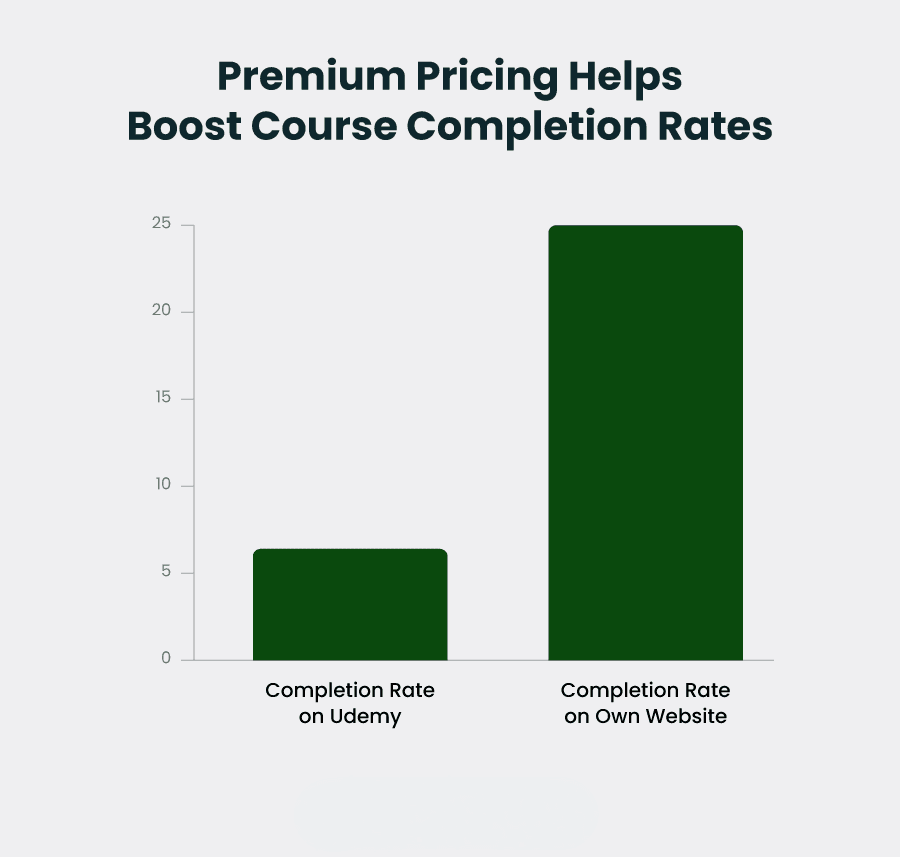
Completion rate on Udemy vs own platform
This remarkable difference can be attributed to the pricing structure—$10 on Udemy compared to $99-$199 on my dedicated platform.
Beyond filtering out casual browsers, strategic value-based pricing creates a stronger financial investment from participants, typically resulting in enhanced dedication to completing your educational materials.
Notably, Teachable conducted a research initiative in 2017 revealing that completion percentages for online educational programs priced above $200 were 61% higher than courses available for less than $50.
Without understanding precisely where and why participants disengage from your educational program, enhancing completion metrics becomes virtually impossible.
An essential method for discovering engagement barriers involves examining your educational platform analytics.
Investigate whether specific modules consistently show higher abandonment rates. Alternatively, analyze video engagement metrics to pinpoint exact moments when viewer retention declines significantly.
A complementary approach to uncovering participation obstacles involves directly soliciting feedback from your learners.
Consider developing a comprehensive feedback instrument and distribute the link (or generate a scannable QR code) to all enrolled participants. Alternatively, reach out via email to inactive students inquiring about their specific challenges and offering personalized assistance.
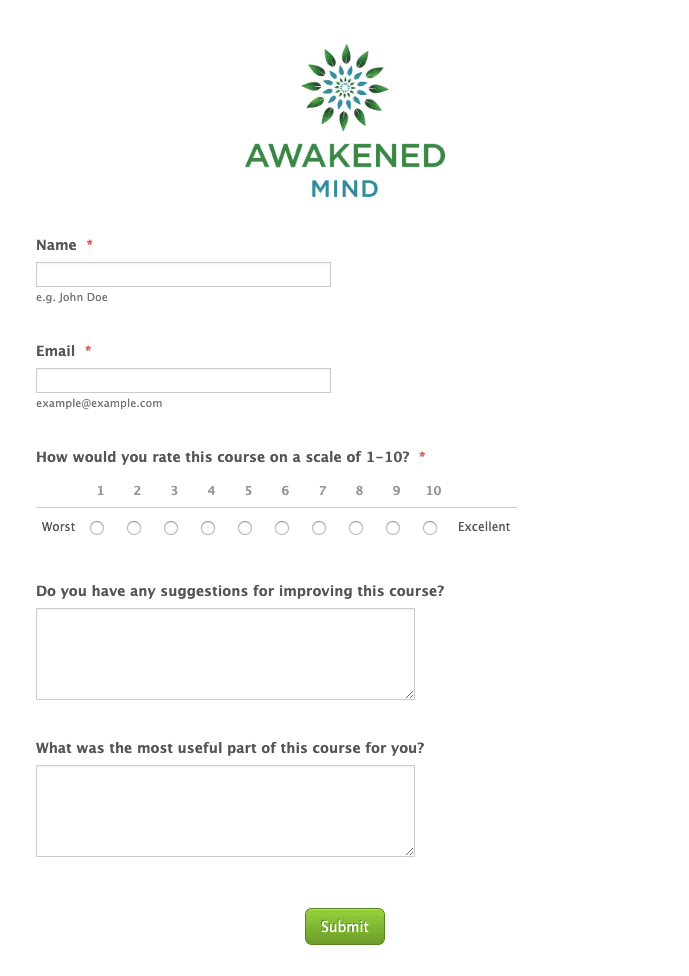
A sample survey to collect student feedback
After pinpointing the specific obstacles that lead participants to discontinue your digital learning programs, you’ll be strategically equipped to develop a comprehensive retention framework utilizing the proven methodologies outlined throughout this resource.
Throughout this resource, we’ve explored numerous approaches to enhance learner involvement and boost the likelihood of participants finishing your digital education program.
Remember that while establishing ambitious completion objectives is valuable, fostering student engagement represents an ongoing journey rather than a destination.
Accordingly, implementing incremental improvements will gradually elevate your completion statistics and help you achieve your target metrics through consistent refinement.
We trust this comprehensive guide provided valuable insights for your educational endeavors. Do you have specific questions about any particular strategy? Which approach resonates most with your current educational context? Please share your thoughts in the comment section below.
The average course completion rates vary depending on the course type, the learning platform, and how the completion rate is defined. However, generally speaking, the average completion rates for online courses is around 15% and can be 40% or even higher in some instances.
Low course completion rates generally indicate low student engagement, which can be because of course design or delivery issues. Low completion rates can also financially impact you, as students who don’t complete a course are less likely to purchase other courses or refer a friend. Having said that, you shouldn’t over-rely on the completion rate metric but also use other factors like student satisfaction and learning outcomes to measure the success of your course.
Online courses can improve completion rates in several ways, which include: communicating with students regularly, improving the course design, building a learning community, offering incentives, and collecting student feedback.

Daniel NicFounder, SellingOnliceCoursesGuide.comis an entrepreneur and digital education specialist who founded sellingonlinecoursesguide.com, a platform dedicated to helping creators and educators successfully navigate the online course marketplace. Through his website, he shares insights and strategies for developing, marketing, and monetizing online educational content. His work focuses on empowering course creators to build sustainable online businesses while effectively sharing their knowledge with students worldwide.


Daniel Nic is an entrepreneur and digital education specialist who founded sellingonlinecoursesguide.com, a platform dedicated to helping creators and educators successfully navigate the online course marketplace. Through his website, he shares insights and strategies for developing, marketing, and monetizing online educational content. His work focuses on empowering course creators to build sustainable online businesses while effectively sharing their knowledge with students worldwide.

We respect your privacy and will never spam you.